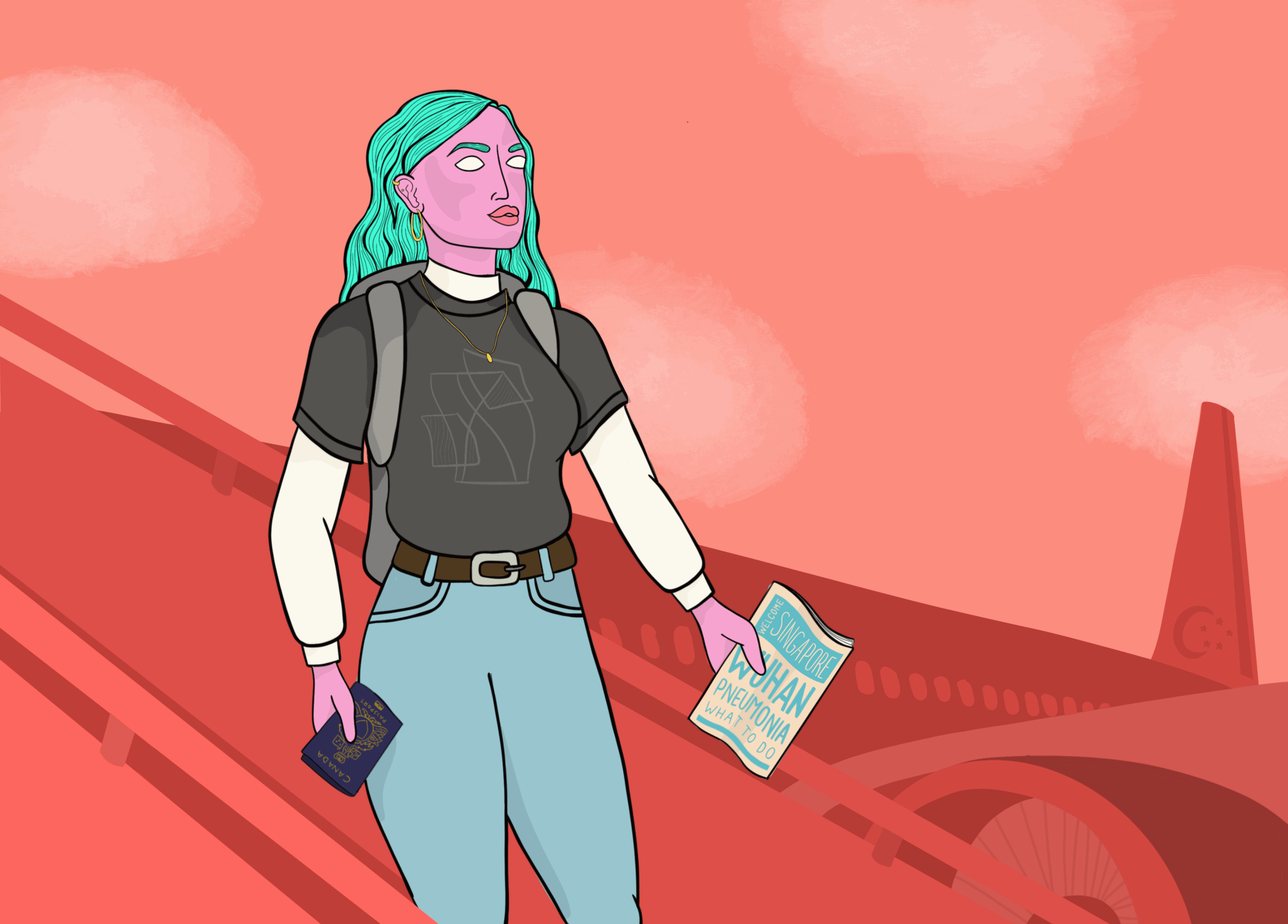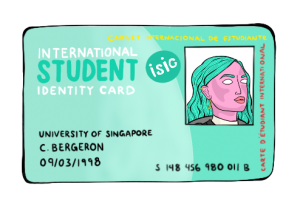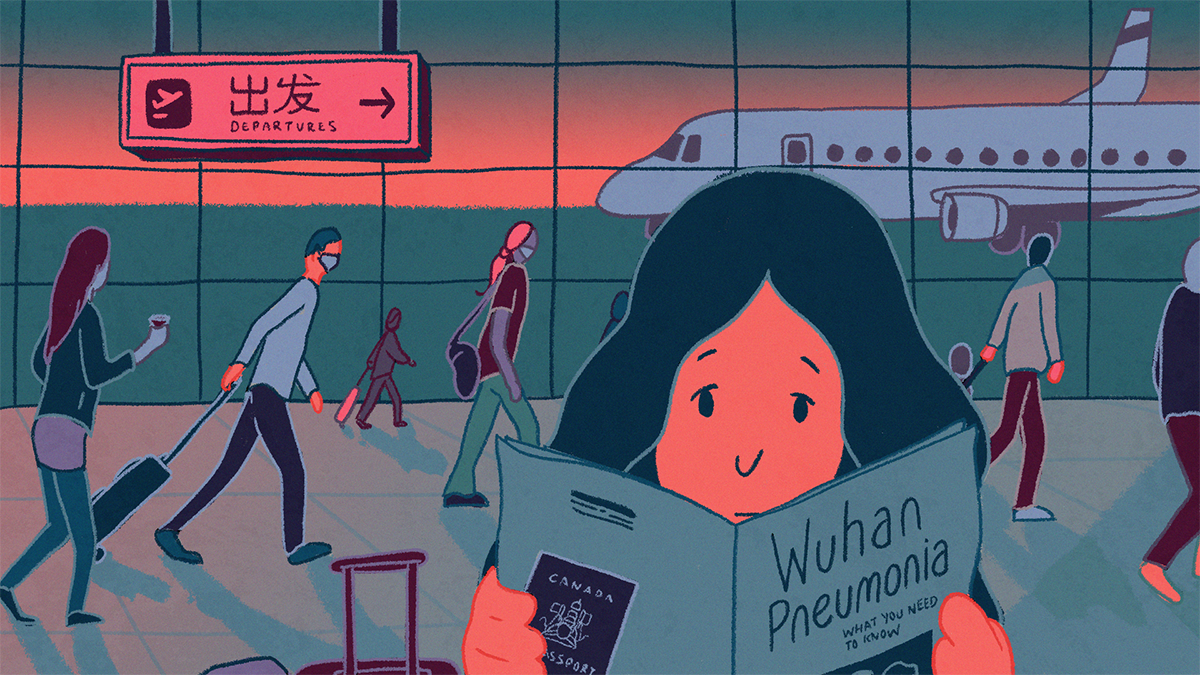My coronavirus experience, live from my Singapore dorm
Stuck inside drawing rainbows and perfecting the way I’m going to write “Ça va bien aller” for my neighbours to see, I have to admit I’m quite envious of how most East Asian governments handled the COVID-19 crisis and kept the number of cases to fractions of those in Canada, despite dealing with it for over four months.
As early as the first week of January, when I first landed in Singapore with a passport in one hand and a flyer about the “Wuhan pneumonia” in the other, the country where I would be spending my exchange semester was preparing for the worst. Upon receiving my student ID on my second day here, I was also given a card with important phone numbers on it and a digital thermometer. “Use this thermometer to monitor your health status,” the note in our welcome pack read, along with an invitation to visit the campus clinic if we felt unwell.
At the time, I think it’s safe to say most of us brushed it off. Most exchangers I met were still giddy about arriving and making new friends. My paranoid roommate was the only person who seemed genuinely worried about crossing paths with anyone who had come from Wuhan or Hubei (it seems you were right, Sarah).
The news of the first four cases of the virus in Singapore scared everyone: on January 27, my school announced that they were turning one of the residence halls into a Government Quarantine Facility. An estimated 400 students—neither the school nor the media gave an accurate number—were given less than 10 hours to pack up their stuff and apply for housing elsewhere.
Around 80 per cent of Singaporeans are ethnically Chinese, so it wasn’t much of a surprise when the Chinese New Year period rolled around and people started traveling in and out of China to visit family, quickly making Singapore the country with the second highest number of cases recorded. About a week later, on February 7, the government announced it was raising the risk level of the disease to DORSCON Orange; that’s the way Singapore assesses diseases and how dangerous they are. Created as a preventive measure after the devastating SARS outbreak in 2003, DORSCON literally just stands for Disease Outbreak Response System Condition.
By this point, with 29 recorded cases, three of the four classes I was taking moved online because they had more than 50 students. My professors were quick to announce changes in the syllabus to accommodate for online midterms and final exams. We were asked to check our temperature twice a day and to register it in the university’s online system; temperature-checking stations were set up in each dining hall, and faculties handed out free thermometers to students who didn’t own any. We were also asked to declare all recent travel online, including the flight numbers and arrival times.
At this point, it became impossible to find hand sanitizer and surgical masks anywhere. Contrary to Canada, though, supermarkets ran out of ramen packets before they did toilet paper.

Despite—or rather because of—all these new regulations, I never felt unsafe going about my days in Singapore. I didn’t become weary of anyone who coughed (most people were wearing masks anyway), I didn’t feel the need to use hand sanitizer every minute (though it was distributed absolutely everywhere), and I wasn’t anxious about entering crowded stores or restaurants. The most ludicrous measure I encountered was the routine temperature checks they started performing before I entered a bar or club, right after they had checked my ID.
To any diehard Westerner, these seem like incredibly intrusive procedures. But they were implemented so seamlessly that it really felt, and still feels, like they were necessary in order to maintain a relatively normal life. I think they were necessary to preserve everyone’s freedom and to keep the country running.
Singapore’s economy never tanked as a result of these measures: their currency, which used to almost be up to par with the Canadian dollar, even surpassed it for a little while.
It pains me to see how fast the virus has spread in the West, and how quickly the cases add up every day. I’m thankful for everything the federal and provincial governments in Canada are doing to contain it, but there have been so many unnecessary deaths as a result of careless preventive measures. After one of my friends came to visit me during spring break, no one in Canada checked her symptoms or her travels. She could have walked in with a fever and customs still would have greeted her with a simple “welcome home, Lorenza.”
I wrote this piece on my last day in quarantine. I had gone on a weekend trip to Ho Chi Minh City in mid-March, right as my university and the government announced stricter quarantine rules for those coming back into the country. The virus was thought to have reached its peak in Singapore a long time ago, but it’s fair that they wanted to prevent it from coming back into the country. I could complain as much as I want about having to be stuck in my room for 14 days, and about the terribly bland food they brought me twice a day to keep me inside. But at the end of the day, I understand why I’m the one who had to quarantine: it’s so that everyone else doesn’t.
Update: About two and a half weeks after I got out of quarantine in early April, the government finally put a “circuit breaker” into place. Short of calling it a full lockdown, it’s been a shutdown of non-essential businesses and a ban on public social gatherings with advice (read: threat of heavy fines and jail time) to stay home. Though it was set to last until May 4, an extension until June 1 was approved shortly after I left Singapore. The reason for this sudden change? A surge in unlinked cases after weeks of having the outbreak under control. To Singapore, these cases are the most dangerous because they make it difficult to track the disease and keep it under control. I guess this really is a new normal for everyone in the world, so stay safe and healthy!
Feature graphic and doodles by Rose-Marie Dion.
Footer graphic by Taylor Reddam.







